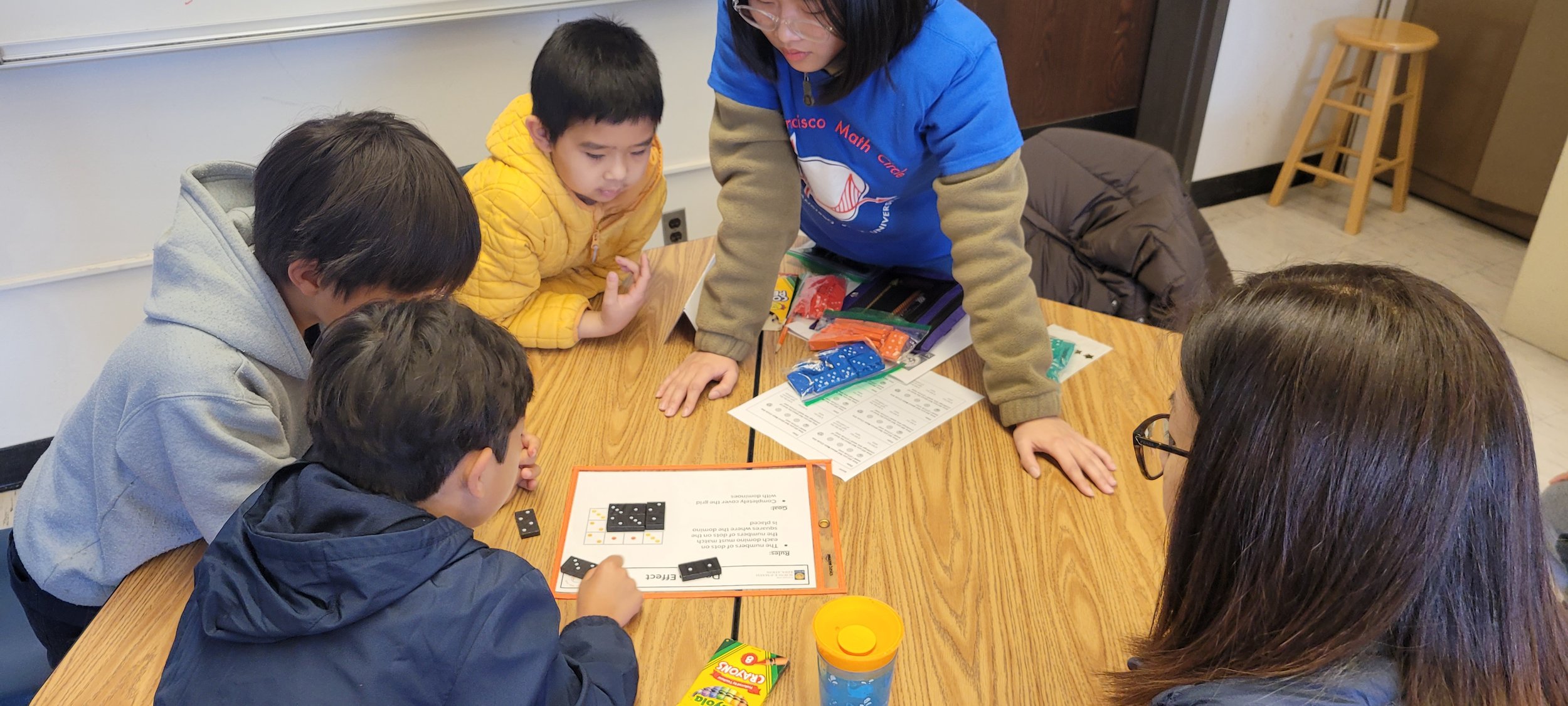Domino Effect
How it works
Imagine you have a set of dominoes:
A domino is a 2 x 1 rectangle that's been divided into two halves, with some number of dots on each end.
In a full set of dominoes, there is exactly one domino for each possible combination of dots. (So, for example, there is one domino with 1 dot on each end, one domino with 1 dot on one end and 2 dots on the other end, one domino with 1 dot on one end and 3 dots on the other end, etc.)
If you're given a grid with different numbers of dots in each square, can you figure out how to arrange the dominoes in your set so the dominoes completely cover the grid and the number of dots on each domino matches the numbers of dots on the squares where the domino is placed? Can you figure out where to place your dominoes without guessing?
In this activity, students explore a variety of different puzzles, each with a different grid. They start with puzzles involving dominoes with 1, 2, or 3 dots, before moving onto puzzles with more dots (and more dominoes!). Along the way, the puzzles get more challenging, and students encounter some puzzles that are impossible!
Why we like this activity
It’s fun! Students enjoy placing the dominoes and trying to solve the puzzles.
It helps students to develop logical reasoning.
It requires students to engage in mathematical habits of mind:
- Using logic to figure out where certain dominoes can and can't go
- Finding and using strategies to solve puzzles without guessing
- Using logic and understanding and explaining when trying to determine which puzzles are impossible
It has a low floor and a high ceiling: Students can get started exploring using basic logic and trial and error, but as the puzzles get more challenging, it's useful to develop more effective strategies.
This activity was developed in collaboration with the Julia Robinson Mathematics Festival.








